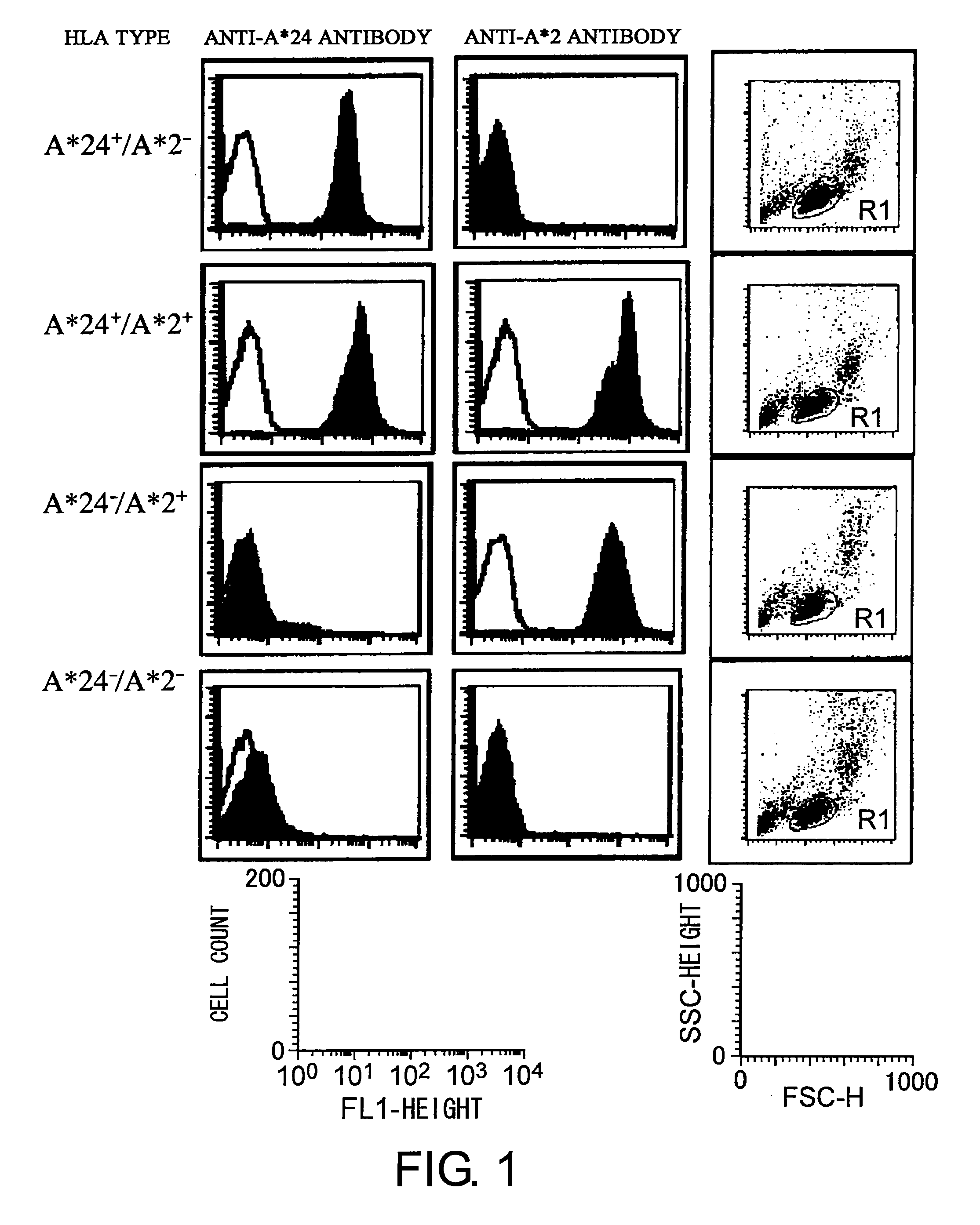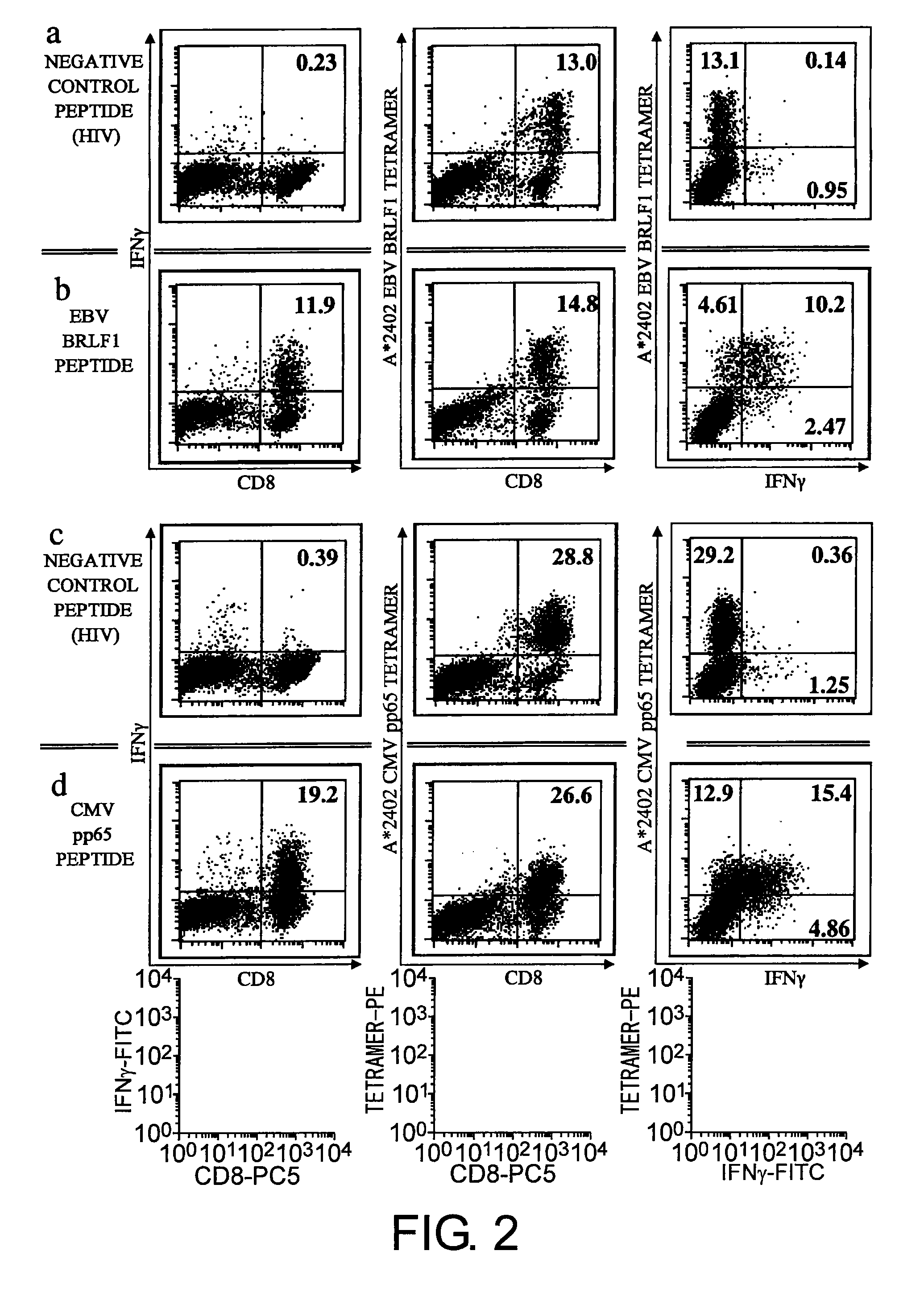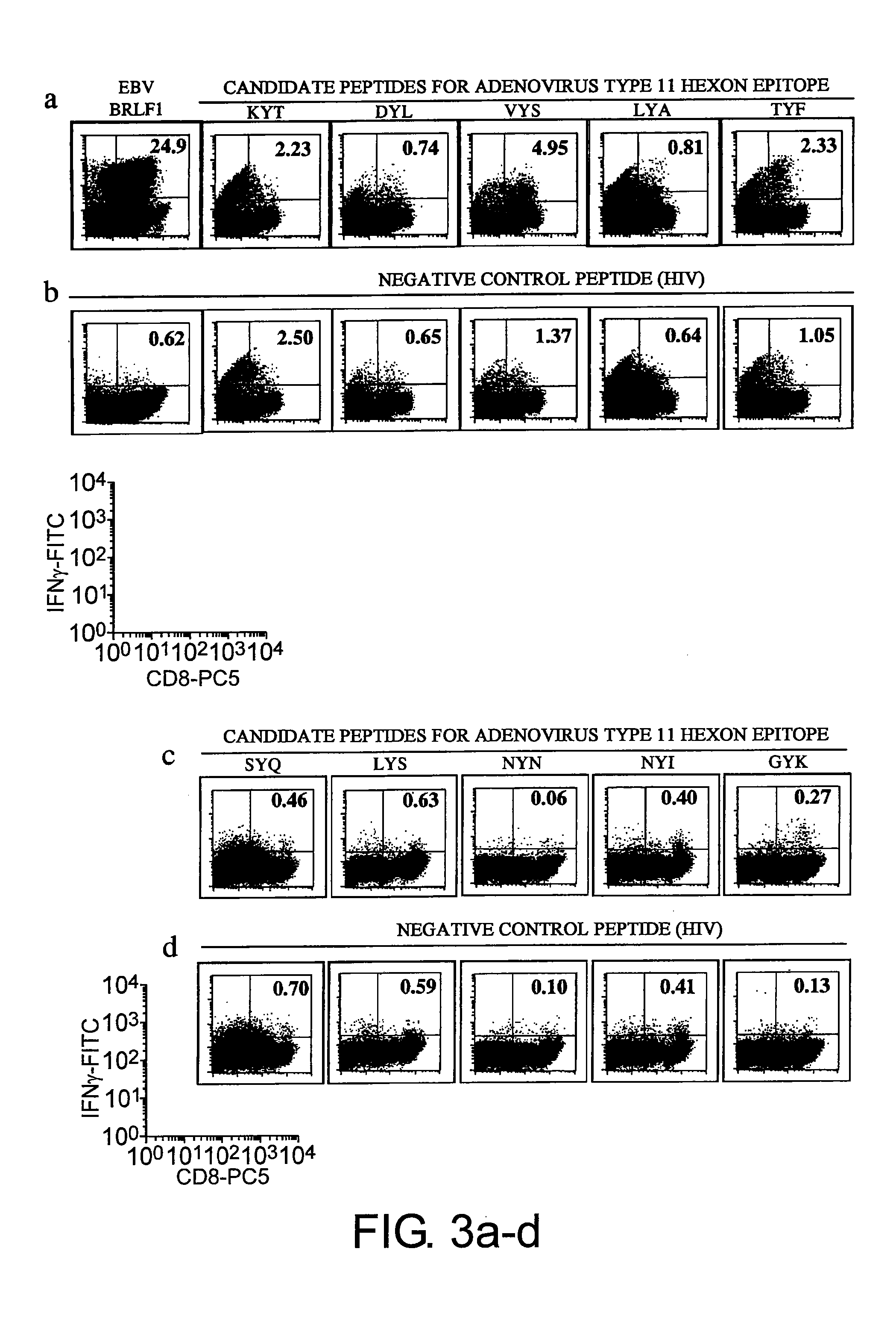Cytotoxic t-cell epitope peptide and use thereof
a cytotoxic, t-cell technology, applied in the direction of peptides, drug compositions, immunological disorders, etc., can solve the problems of b-cell lymphoproliferative disorder, adenovirus infection, and high risk of interstitial pneumonia and hepatitis, and achieve no effective treatment method for antiviral agent-resistant hcmv infection, adenovirus infection, and adenovirus infection
- Summary
- Abstract
- Description
- Claims
- Application Information
AI Technical Summary
Benefits of technology
Problems solved by technology
Method used
Image
Examples
example 1
Selection of Candidates for Adenovirus-Specific CTL Epitope Peptides
[0156]Fifty one serotypes of adenovirus have been reported and are categorized into six subgroups (A to F). Hexon proteins, which exhibit the highest homology among the 51 serotypes, were analyzed to arrive at epitope peptides that specifically recognize 11 types of subgroup B, the group of virus which is particularly problematic in post-transplantation infection, and epitope peptides specific to all adenoviruses including subgroup B. The adenovirus particle has an envelope-free regular icosahedron structure having a diameter of 80 to 90 nm. Hexon forms the 20 triangular facets and ridges in the regular icosahedron.
[0157]The selection of candidate epitope peptides specific to adenoviral hexon was conducted for the HLA-A*24 molecule, which is carried by about 60% of Japanese population. Selection was specifically achieved through searches with various software publicly available on the Internet which can be used to r...
example 2
Identification of Adenovirus-Specific CTL Epitope Peptide—HLA Type Screening
[0161]Candidate peptides for adenovirus-specific CTL epitopes have an HLA-A*24 molecule-binding motif. Thus, it is preferred that the epitope peptides are identified using peripheral blood derived from persons possessing the HLA-A*24 molecule. Accordingly, a serum test was first performed to determine whether the blood donors possessed the HLA-A*24 or HLA-A*2 molecule. Specifically, an anti-HLA-A*24 antibody (clone name: 22E1, MBL Co.) or anti-HLA-A*2 antibody (clone name: BB7.2, MBL Co.) was added at the concentration of 1 or 10 μg / ml to 100 μl of peripheral blood from healthy adults or 2 to 10×105 PBMCs isolated from peripheral blood. An isotype antibody for each was similarly added as a negative control. The reaction was conducted at room temperature for 15 to 30 minutes, and then the samples were reacted with a fluorescein isothiocyanate (FITC)-labeled anti-mouse IgG antibody. When peripheral blood was u...
example 3
Identification of Adenovirus-Specific CTL Epitope Peptide—Preparation of Antigen-Presenting Cells
(1) Preparation of EBV-Infected B Cell Line
[0162]PBMCs were co-cultured with a supernatant (containing live EBV) of B95-8 cells (obtained from JCRB Cell Bank), an EBV-producing cell line, according to a conventional method (Kuzushima K, Yamamoto M, Kimura H, Ando Y, Kudo T, Tsuge I, Morishima T. Establishment of anti-Epstein-Barr virus (EBV) cellular immunity by adoptive transfer of virus-specific cytotoxic T lymphocytes from an HLA-matched sibling to a patient with severe chronic active EBV infection. Clin Exp Immunol. 103:192-198 (1996)) to establish an EBV-infected B cell line (lymphoblastoid cell line; hereinafter referred to as EBV-infected LCL). After about two weeks, the expression of HLA molecule, CD80, CD83, and CD86 was confirmed.
(2) Preparation of CD40-B cells
[0163]NIH3T3 cells (NIH-CD40L) in which the human CD40L gene has been introduced and stably expressed were co-cultured ...
PUM
| Property | Measurement | Unit |
|---|---|---|
| Cytotoxicity | aaaaa | aaaaa |
Abstract
Description
Claims
Application Information
 Login to View More
Login to View More - R&D
- Intellectual Property
- Life Sciences
- Materials
- Tech Scout
- Unparalleled Data Quality
- Higher Quality Content
- 60% Fewer Hallucinations
Browse by: Latest US Patents, China's latest patents, Technical Efficacy Thesaurus, Application Domain, Technology Topic, Popular Technical Reports.
© 2025 PatSnap. All rights reserved.Legal|Privacy policy|Modern Slavery Act Transparency Statement|Sitemap|About US| Contact US: help@patsnap.com



